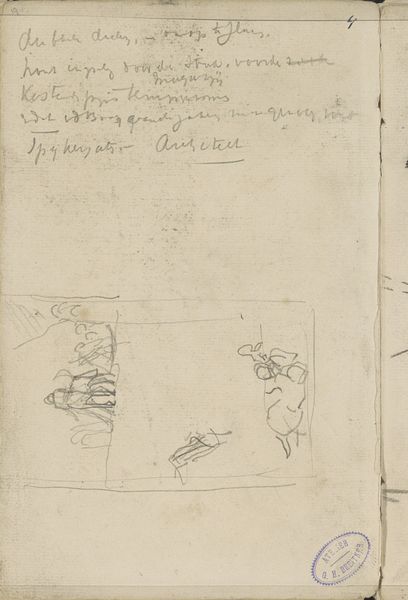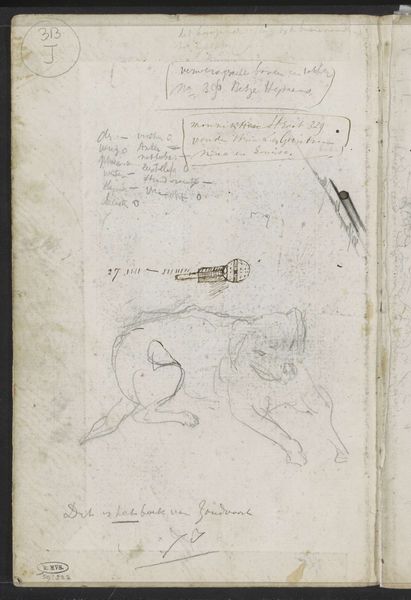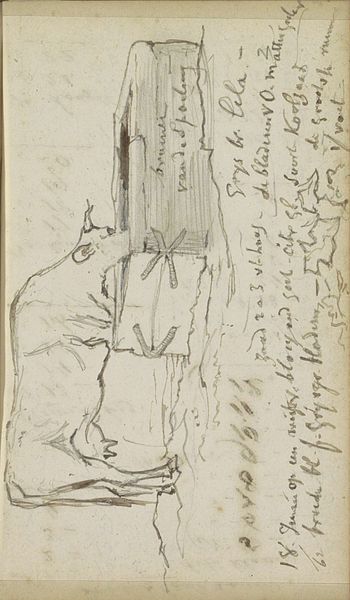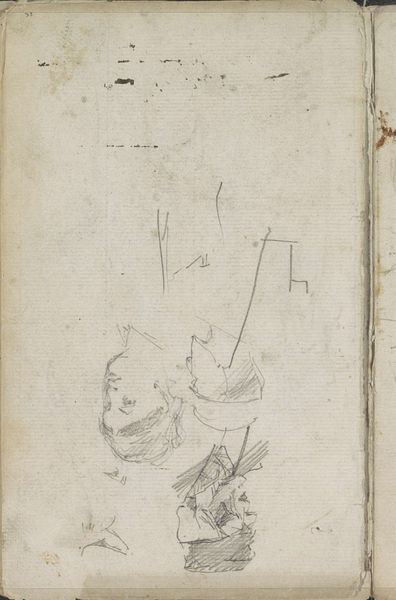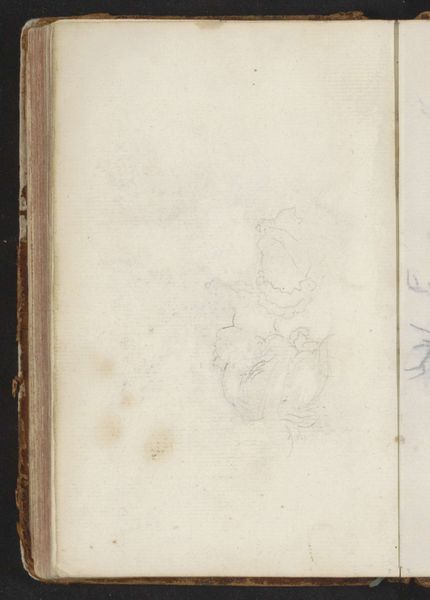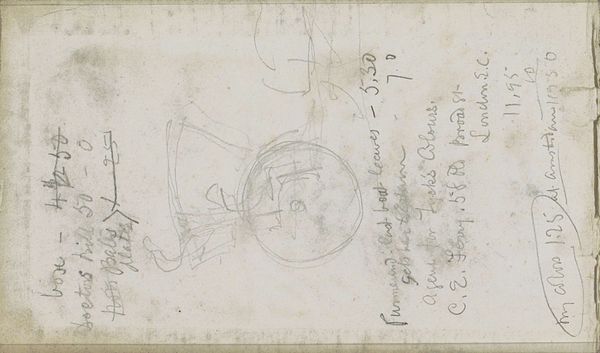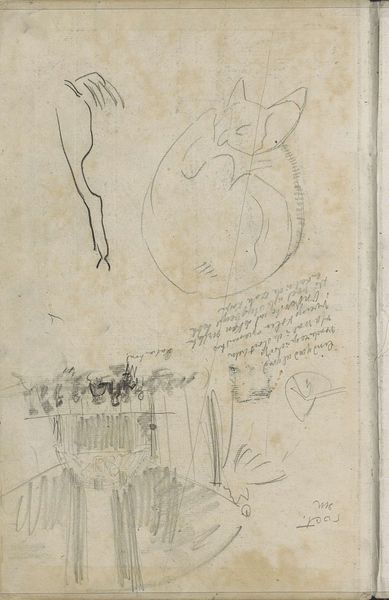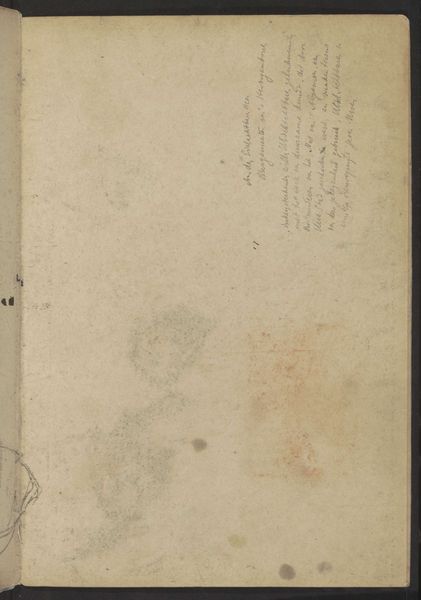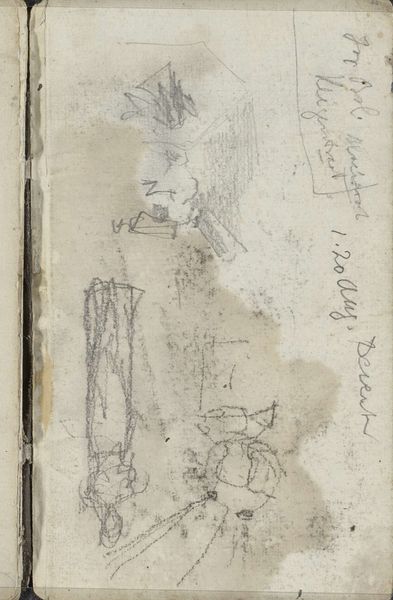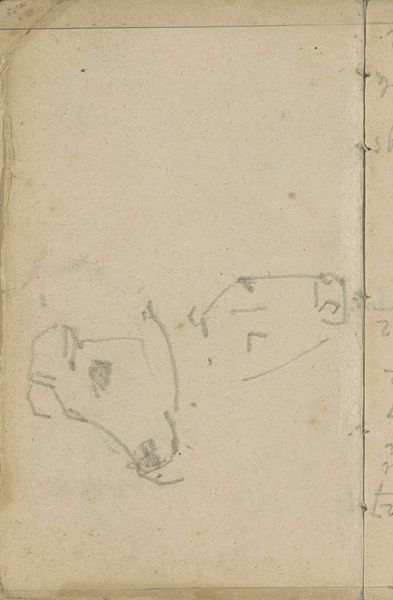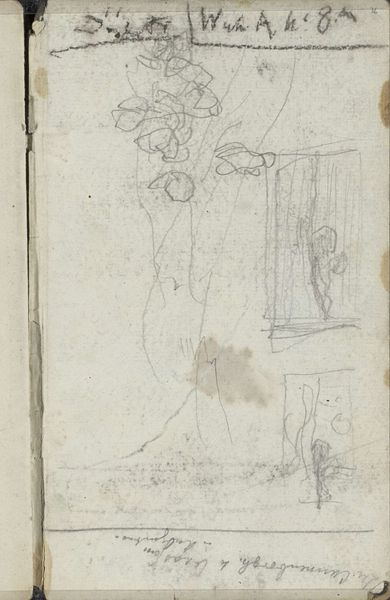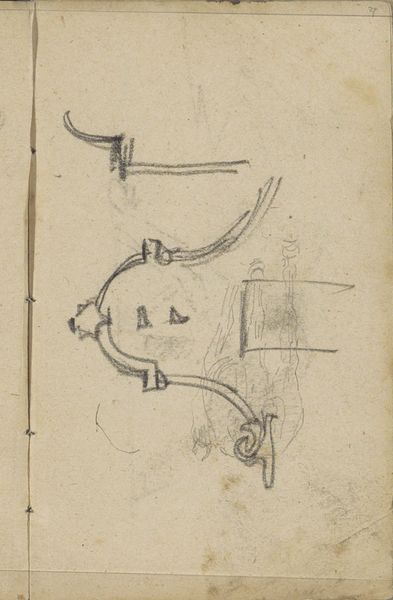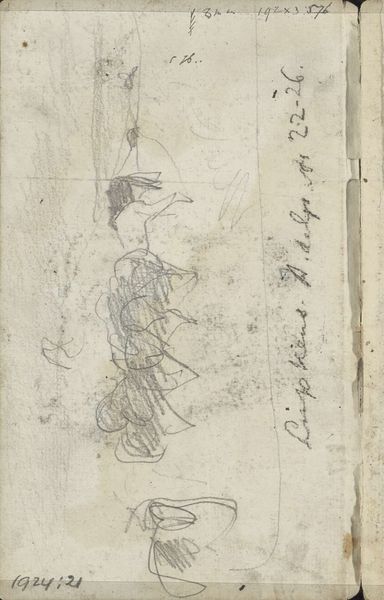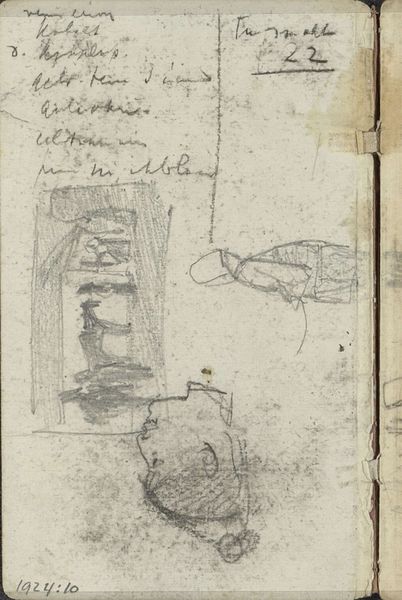
drawing, paper, pencil
#
portrait
#
drawing
#
impressionism
#
landscape
#
paper
#
pencil
Copyright: Rijks Museum: Open Domain
Editor: This is "Studieblad, onder andere met een hond," a study sheet including a dog, by George Hendrik Breitner, around the 1880s. It's a pencil drawing on paper. It has a playful and somewhat frantic feel to it; like catching a fleeting idea. What can you tell me about it? Curator: Well, from a materialist perspective, I immediately notice the apparent cheapness of the materials, the disposable nature of the sketch. Paper was becoming readily available during this period, democratizing artistic creation. The immediacy of the pencil allows for the rapid recording of observations and ideas, making it an ideal tool for exploring modern life. What social strata do you think could most readily produce art this way? Editor: Hmm, maybe it points to the growing middle class. They would have had more leisure time and access to affordable materials than, say, laborers or aristocrats. Curator: Precisely. This shifts art away from exclusively commissioned works towards more personal expressions. Look at the composition; fragmented and unfinished. Breitner’s practice indicates that art doesn't exist solely in the finished painting but lives within this messy, iterative process of sketching and note-taking. Does that challenge the typical notion of "high art," do you think? Editor: Definitely. It blurs the line between casual observation and deliberate creation, which aligns it more with craft or even documentation, rather than some lofty ideal. I'm wondering how the labor comes into play with impressionism. Curator: It forces us to acknowledge the artist’s labor - the time spent observing, the physical act of drawing, the editing of those experiences. Impressionism isn't just about capturing light; it's about processing the modern world, rapidly shifting perspectives and fleeting moments. What kind of perspective might it offer towards our world? Editor: I get it now. Looking at the means of production really opens up a richer understanding of this drawing than just seeing it as a preliminary sketch. I’m starting to think more about the consumption of materials and art's connection with everyday life. Curator: Exactly. We see the remnants of his artistic journey - his thoughts, his experiments, all laid bare on a humble piece of paper. That itself is worth studying.
Comments
No comments
Be the first to comment and join the conversation on the ultimate creative platform.
